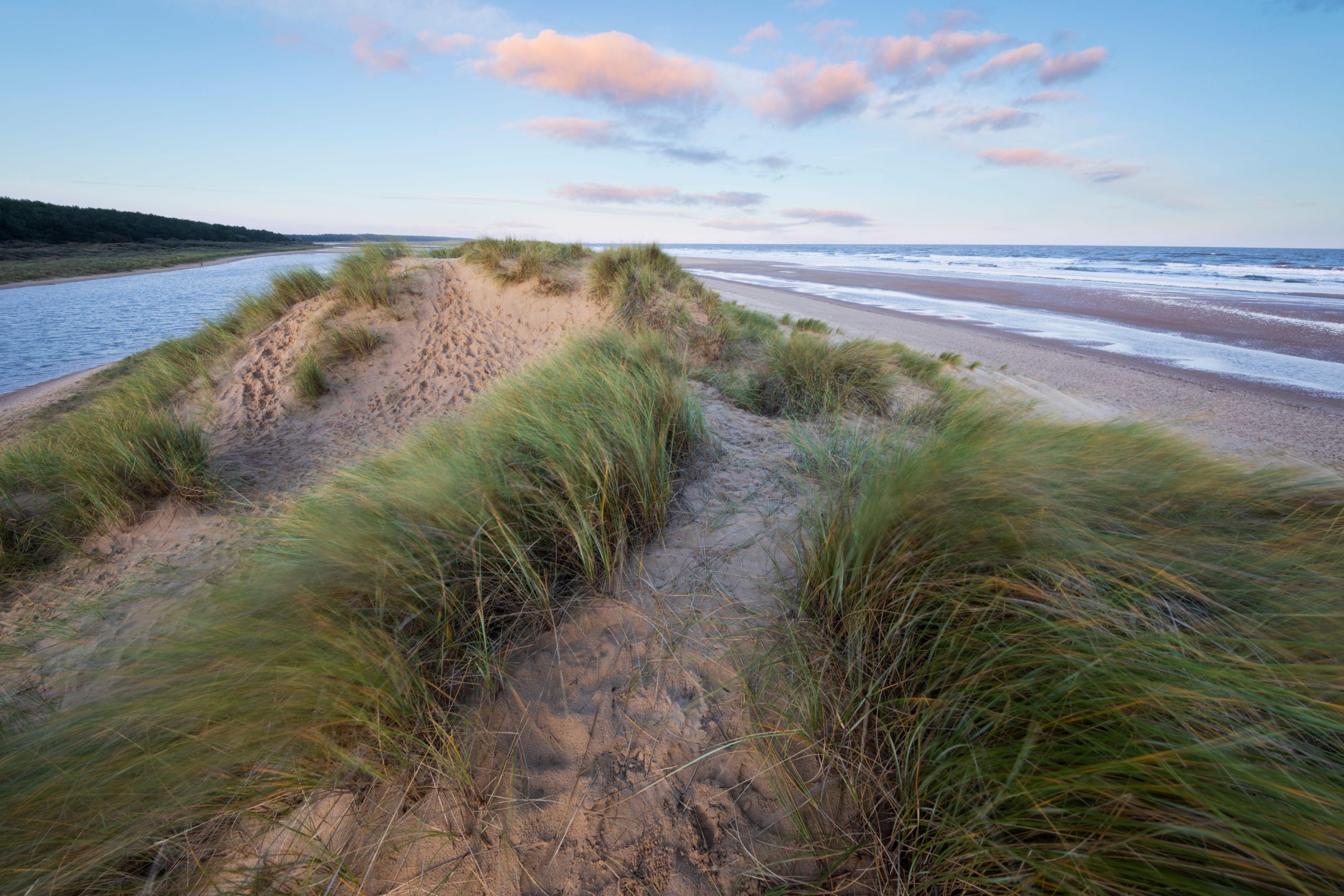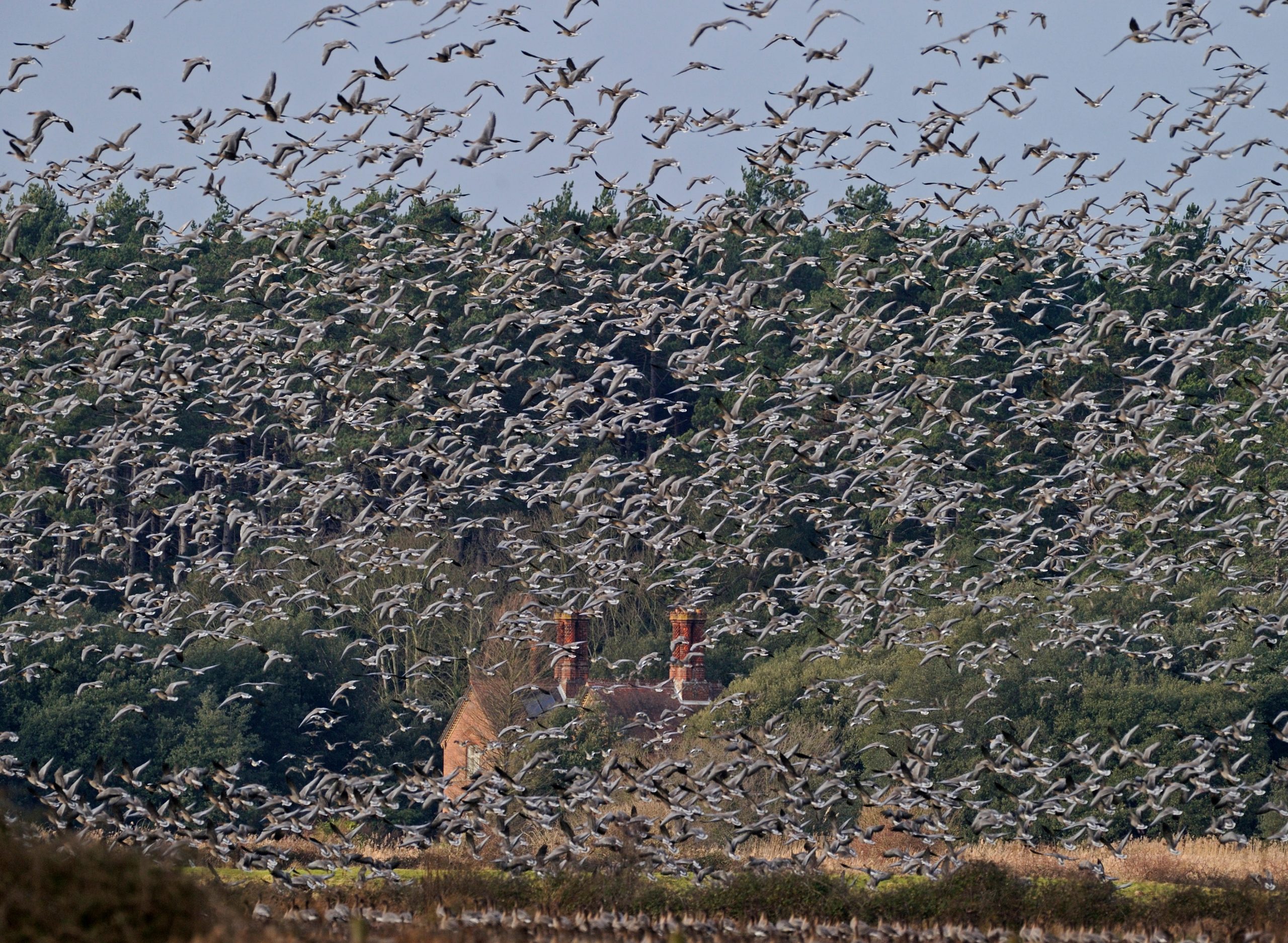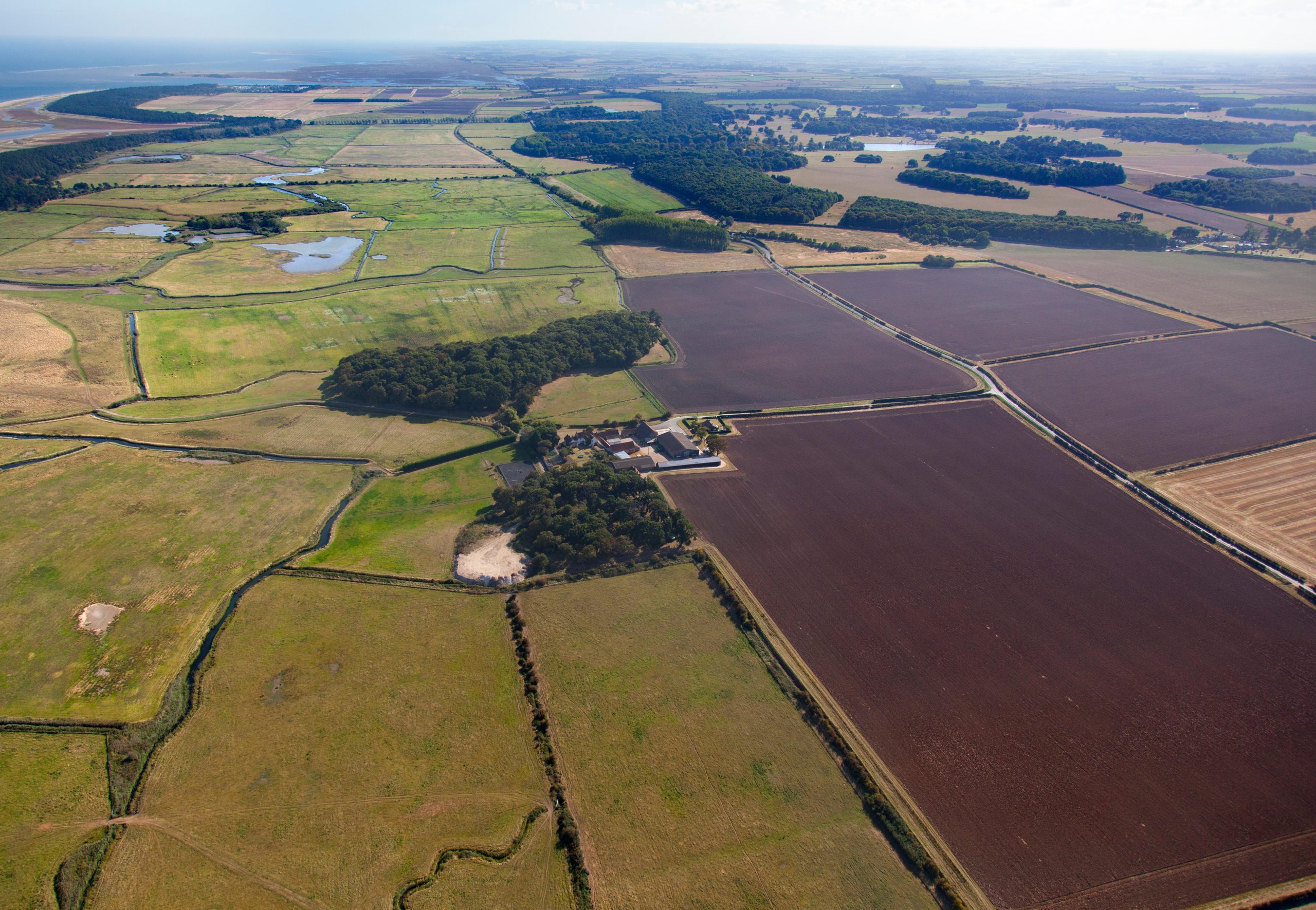A farmer's-eye view of Holkham, the ultimate example of profitable food production and wildlife conservation going hand in hand
Jamie Blackett leaves his Dumfriesshire farm to visit Holkham, and comes away impressed and inspired.


I wake disorientated. Outside, I can hear barnacle geese barking and the high-pitched peeping of oystercatchers. My inner satnav is telling me I’m at home on the Solway Firth in winter, but the vastness of the four-poster bed, the Old Master on the wall and the warmth of the July sun coming through a chink in the tapestry curtains say something completely different. I piece together a night of watching Eng-er-land beat Denmark, lubricated by copious quantities of Pomerol’s finest. I open the curtains to see house martins dancing across the Palladian façade of one of England’s best-loved country houses and, across the park, fallow deer drinking in a waterfowl-flocked lake.
It is a vision of Eden. I remember my host telling me the barnacle geese had arrived in 2009 and now breed in the park, rather than taking the long trek back to the Arctic Circle. Why wouldn’t they? They winter elsewhere, possibly on the Solway; the answer will soon be discovered by tagging them.

I’m at Holkham in Norfolk. As part of my picaresque quest to understand how the British countryside is managed, I have made the pilgrimage to the wellspring of the agricultural revolution, where Thomas Coke, 1st Earl of Leicester, innovated crop rotations. His descendant and namesake, Tom, 8th Earl, is also passionate about the farmed environment and leads a team imbued with his determination to cherish the estate’s natural heritage and reduce reliance on chemicals by extending rotations.
Where once Holkham farm tours would have focused on crop yields, now farmers like me go there to see how profitable food production and successful wildlife conservation can go hand in hand. Thick crops of barley are mere wallpaper as we obsess over the extra wide hedges (‘hedge porn’ in conservationist speak) and hay meadows on margins brimming with fumitory, favourite snack of the turtle dove.
The ebullient director of conservation at Holkham, Jake Fiennes, guides me around the Holkham National Nature Reserve, the same disconcertingly blue eyes as his thespian siblings flashing with enthusiasm for his subject. Once managed by Natural England, the reserve has been taken back in hand and is thriving under Mr Fiennes’s robustly undogmatic husbandry, which blends scientific rigour with pragmatic farming, forestry and predator control.

For me, this is the ultimate busman’s holiday and it is a joy to see how managed grazing by cattle and sheep is producing healthy populations of lapwings, avocets, marsh harriers, natterjack toads and other threatened species. It is a reminder that, for all the trumpeted busyness of the quangocracy and certain powerful charities on the land, the agricultural counter-revolution is being driven by landowners and farmers on the ground, not by environmentalists in offices and television studios. Indeed, it is often happening despite them, rather than because of them.
As soon as I am home, as farmers are wont to do, I go to see how my own attempts are matching up. Reassuringly, the hedge backs are frothing with meadowsweet and violet clumps of vetch, and a brood of linnets is perching on a wire beside the cow track. First stop is the newly seeded grass where, until this spring, there had been thick rushes.
Sign up for the Country Life Newsletter
Exquisite houses, the beauty of Nature, and how to get the most from your life, straight to your inbox.
The history of agriculture can be deciphered through the soil strata of Catie’s Field. It had always been good dairy pasture, until the 1970s, when the EU’s Common Agricultural Policy drove it on a journey through chemical-soaked wheat to ragwort-flecked set aside that became ever thicker rushes, when it seemed easier to be paid to grow nothing in the unforgiving clay. My father said he knew he had been beaten by the harvest of 1985 when he saw a wisp of snipe rise in front of the combine just as he got it bogged. You can still see the outline of the scars it left. Eventually, I brought beef cattle on and wrestled with the rushes and battled simultaneously with the civil servants to tick boxes in an environmental scheme that has now run out, seemingly without any replacement.
Finally, we decided this dry spring to flail, bale, spray, rotovate, shallow plough, subsoil, lime, power harrow, roll, drill, fertilise and roll it again back into how it was in 1973. The new style of regenerative dairying with rotational grazing that maintains insect-rich soils and a mosaic of grass, plantain and clover leys may be more likely to support wildlife. A hare is picking her way delicately across one corner. It seems a good omen.
Jamie Blackett farms in Dumfriesshire and is the author of ‘Red Rag to a Bull, Rural Life in an Urban Age’
Country Life is unlike any other magazine: the only glossy weekly on the newsstand and the only magazine that has been guest-edited by HRH The King not once, but twice. It is a celebration of modern rural life and all its diverse joys and pleasures — that was first published in Queen Victoria's Diamond Jubilee year. Our eclectic mixture of witty and informative content — from the most up-to-date property news and commentary and a coveted glimpse inside some of the UK's best houses and gardens, to gardening, the arts and interior design, written by experts in their field — still cannot be found in print or online, anywhere else.
-
 How an app can make you fall in love with nature, with Melissa Harrison
How an app can make you fall in love with nature, with Melissa HarrisonThe novelist, children's author and nature writer Melissa Harrison joins the podcast to talk about her love of the natural world and her new app, Encounter.
By James Fisher
-
 'There is nothing like it on this side of Arcadia': Hampshire's Grange Festival is making radical changes ahead of the 2025 country-house opera season
'There is nothing like it on this side of Arcadia': Hampshire's Grange Festival is making radical changes ahead of the 2025 country-house opera seasonBy Annunciata Elwes